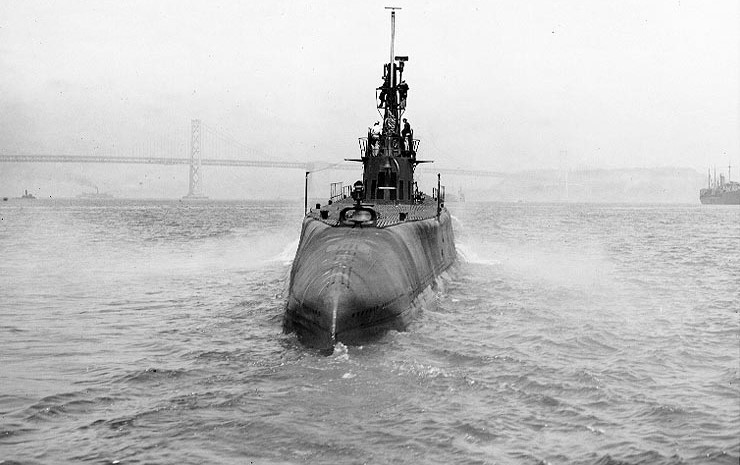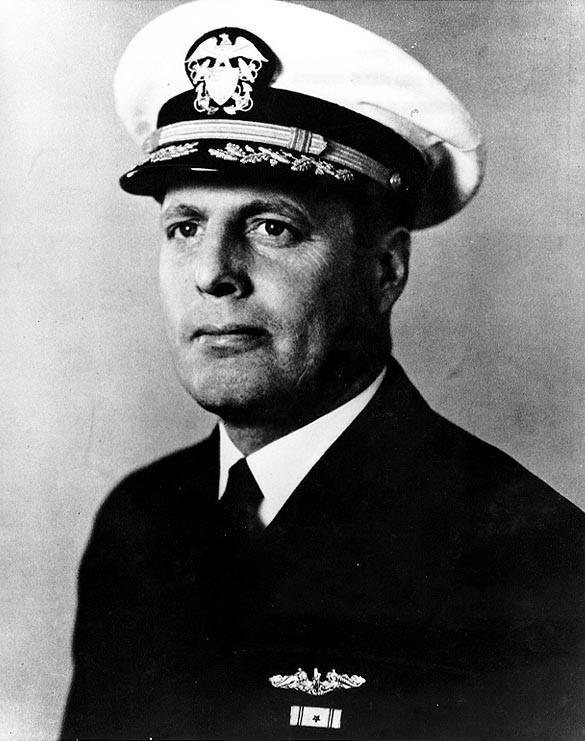|
November 19, 1943 the USS Sculpin SS-191 was scuttled after an attack by a Japanese destroyer. Our story begins on July 27, 1938 when the Sculpin was launched at Portsmouth, N.H. Less than two months later a sister sub, the Squalus SS-192 was launched at Kittery, ME. This is important because on May 23, 1939, during diving tests, the Squalus sank off New Hampshire. The main induction valve was open and water flooded the rear compartments of the sub. The Sculpin came to the rescue and located the rescue buoy and established communications with the sunken sub. However, the communication line broke, the tug Penacook would spend the rest of the day dragging a grapnel until they located the Squalus that evening. In the mean time, the USS Falcon and a rescue team headed by Lt. Cmdr. Charles B. "Swede" Momsen were en route from Washington D.C. On the morning of the 24th, they began bringing up the survivors in a devise called the McCann rescue chamber. A large diving bell that could be attached to the hatch of the sunken sub. Three dives were made by that evening and 25 men had been rescued. On the way up from the last dive the cable jammed and the dive bell had to return to the Squalus It took over four hours of intense and feverish work to repair the cable, and after midnight the dive bell finally made it to the surface. In all 33 men were rescued, the 26 who died were killed when the sub flooded. Following this historic rescue four men were awarded the Medal of Honor. The Sculpin was there in her sisters time of need. The Squalus would be raised, refitted and renamed Sailfish. The Sculpin left on her 9th patrol on Nov. 5, 1943 from Pearl Harbor. Under the command of Fred Connaway. Her mission was to support the action of our surface forces in the Gilbert Islands by intercepting and attacking any enemy forces which might be proceeding from Truk toward the Marshall Islands to oppose our surface forces. On Nov. 18 the Sculpin located a Japanese convoy, on the attack approach, Sculpin was spotted, and the convoy began to zig zag, the Sculpin made a crash dive. An hour later another attempt was made to attack, but this time her periscope surfaced close to a destroyer, Sculpin made another crash dive, but the sub was depth charged immediately. The attack only did minor damage, but doomed the boat. The depth gauge had jammed at 125 feet. When the Sculpin later came to periscope depth, because of the broken gauge, she broke the surface. Sculpin was attacked again. While already deep a string on 18 depth charges were loosed on Sculpin sending her out of control. She went so deep her pressure hull was distorted and water began to pour in. Capt. Connaway decided to surface and fight clear, but the Sculpin's deck gun was no match for the Japanese ship. A shot to the conning tower killed Connaway and several others. Lt. Brown succeeded him in command. He decided to scuttle the boat. Aboard was one Capt. John P. Cromwell, he was to take command of an attack group consisting of four subs. He knew the plans to invade the Gilbert Islands and other upcoming operations. He was also an expert in ultra, the decoding machine the Navy was using to read secret messages. He was concerned about the prospects of torture and drugs the Japanese might use to obtain this information from him. He therefore refused to leave the boat. The Sculpin was scuttled by diving with all vents open. In all 12 men rode her down. Cromwell was awarded the Medal of Honor for giving his life to keep the secrets. Forty two men were picked up by the Japanese destroyer, one was thrown overboard because he was severely wounded. They were taken to Truk where they were interrogated for ten days. They were then put on two carriers for transport to Japan. While en route the carrier Chuyo was sunk by the other sub in this story, the Sailfish. What makes the story worse is that of the 21 Sculpin survivors on the Chuyo, 20 were killed. The rest of the men were taken for further interrogation and later sent to the copper mines of Ashio to be used as slave labor. They were liberated on Sept. 4 1945. In her 8 patrols Sculpin had sunk 9 ships and damaged 10 others. She was awarded 8 battle stars and Philippine Presidential Unit Citation. Sailfish survived the war, she was awarded nine battle stars for service in the Pacific and received the Presidential Unit Citation for outstanding performance on her tenth patrol. |
© 2005 Michael W. Pocock MaritimeQuest.com |
 |
USS Sculpin SS-191
|
 |
Captain John P. Cromwell |